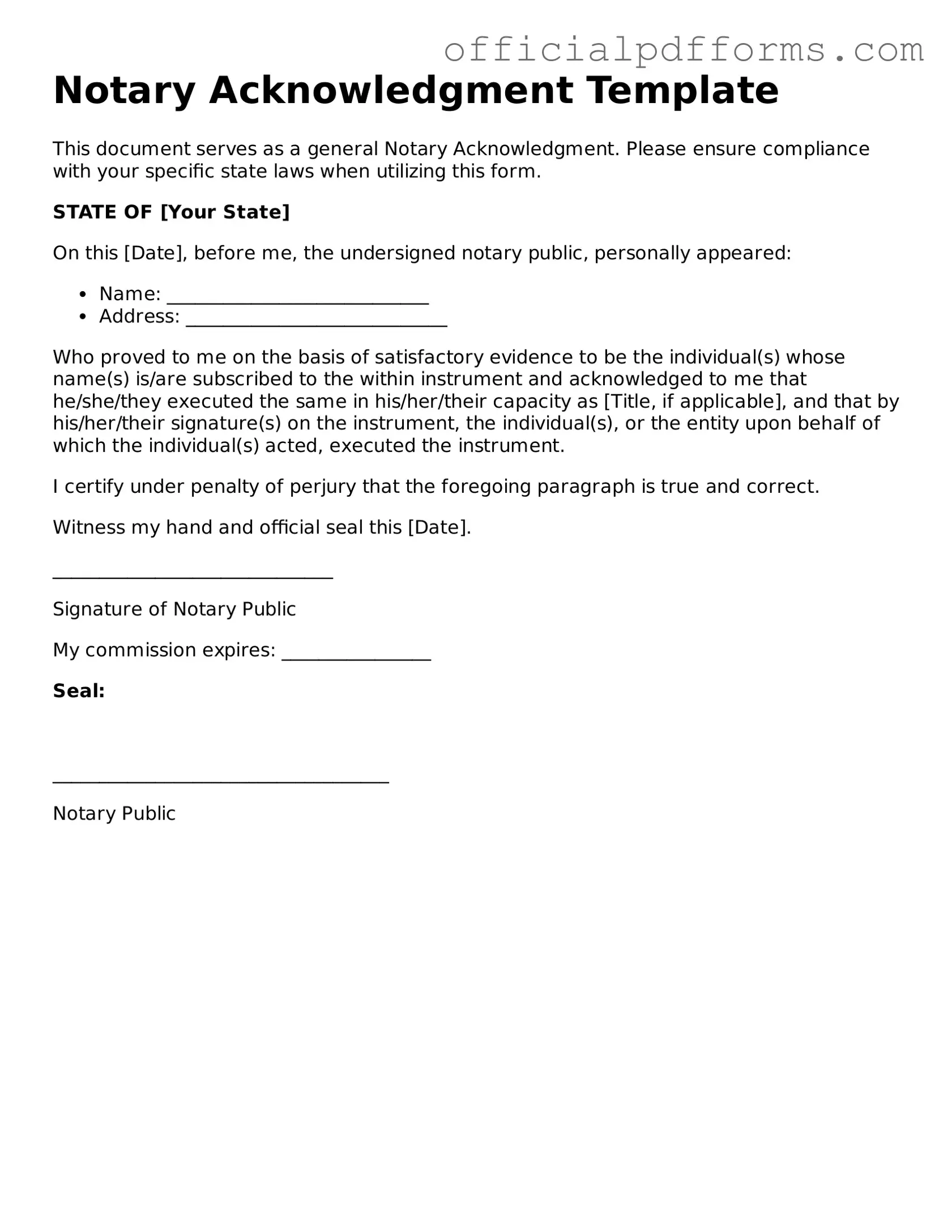A Notary Acknowledgement form is a legal document that verifies the identity of a signer and confirms that they willingly signed a document. This form is often used in conjunction with various legal documents, such as contracts, deeds, and powers of attorney, to ensure that the signatures are authentic and that the signers understand the contents of the documents they are signing.
Why is a Notary Acknowledgement important?
The Notary Acknowledgement serves several important purposes. First, it provides a layer of protection against fraud by confirming the identity of the signer. Second, it helps establish the authenticity of the document, which can be crucial in legal disputes. Finally, having a Notary Acknowledgement can enhance the credibility of the document in the eyes of courts and other institutions.
Who can act as a Notary Public?
Notaries Public are individuals authorized by the state to perform notarial acts. Each state has its own requirements for becoming a Notary, but generally, applicants must be at least 18 years old, a resident of the state, and pass a background check. Some states may also require training or an exam.
A Notary Acknowledgement form usually contains the following information:
-
The name and signature of the signer.
-
The name and signature of the Notary Public.
-
The date the document was signed.
-
The location where the acknowledgment took place.
-
A statement confirming that the signer appeared before the Notary and acknowledged signing the document.
How do I get a document notarized?
To get a document notarized, follow these steps:
-
Find a Notary Public. You can search online, ask at your bank, or check local government offices.
-
Bring the document you need notarized, along with a valid form of identification, such as a driver’s license or passport.
-
Sign the document in front of the Notary. Do not sign it beforehand, as the Notary needs to witness your signature.
-
The Notary will complete the Notary Acknowledgement form and affix their seal to the document.
Is there a fee for notarization?
Yes, Notaries Public may charge a fee for their services, and the amount can vary by state and the type of document being notarized. It is advisable to ask about the fee beforehand to avoid any surprises. Some Notaries may offer their services for free, especially in community or non-profit settings.
Can a Notary Public refuse to notarize a document?
Yes, a Notary Public can refuse to notarize a document for several reasons, including:
-
The signer is not present.
-
The signer does not have valid identification.
-
The Notary suspects that the signer is being coerced.
-
The document is incomplete or appears to be fraudulent.
Notaries have a responsibility to ensure that all parties involved are acting voluntarily and that the documents are legitimate.
How long is a Notary Acknowledgement valid?
A Notary Acknowledgement does not have an expiration date in itself. However, the validity of the underlying document may be subject to specific time frames, depending on the type of document and state laws. It is essential to check the relevant regulations to ensure compliance.
